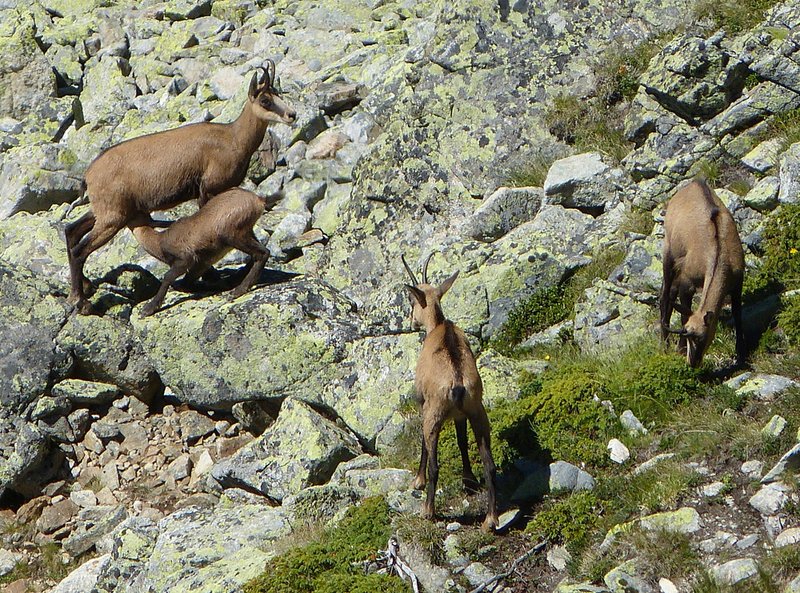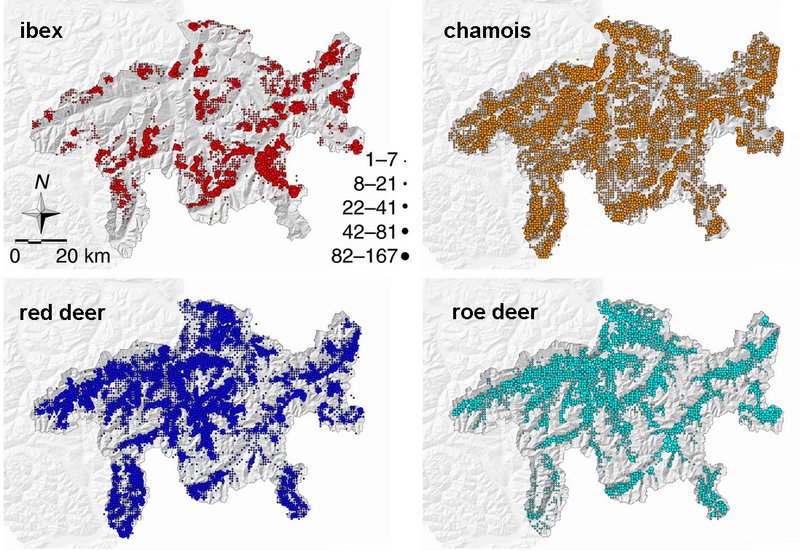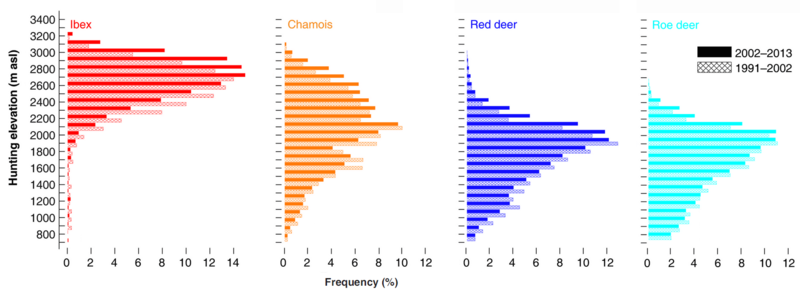In recent decades, researchers have documented numerous examples of animal and plant species moving to higher elevations due to climate change. This also applies to three alpine ungulate species, as an international research team led by the Swiss Federal Research InstituteWSL showed on the basis of a unique data set. The Canton of Grisons Hunting and Fishing Authority documented more than 230,000 places in the canton where roe deer, red deer, chamois and ibex were harvested between 1991 and 2013.
Analysis of these data shows that ibex, chamois and red deer frequented significantly higher ground during this time, elevations that are, on average, 135, 95 and 80 metres respectively higher than those they previously frequented. "This data set is unique and shows that even large, warm-blooded species react to rising ambient temperatures", says Kurt Bollmann from WSL's Conservation Biology research group. Previously, it had been assumed that this behaviour applies in particular to plants and cold-blooded animals, such as reptiles or insects.

Fig. 1 - Over the past two decades, Grisons chamois have moved their retreats to higher elevations. Photo: Thomas Wehrli (Amt für Jagd und Fischerei GR)
Different from year to year
Ungulate behaviour depends on the environmental conditions during the hunting season and varies from year to year. If the autumn is warm and snow-free, then the sites where red deer, chamois and ibex are shot are at higher elevations. These are species that mainly feed on pastures and alpine grasslands. Roe deer are more closely linked to their territories and to the forest, so their tendency to move to higher ground was weaker.
Over the last 20 years, mean September and October temperatures in the area covered by the study have risen by 1.3°C, a trend which, climate models predict is set to continue. This will change the supply, accessibility and quality of plant food in the mountain forests and Alpine grasslands, which will force wild animals to further adjust their food intake in keeping with the higher elevations they frequent.
The results so far indicate that red deer, chamois and ibex in the Canton of Grisons are reacting flexibly to this change. Whether or not this may have longer-term consequences for the populations of the investigated ungulates cannot be concluded with any certainty today. "However, consistent, precise and continuous documentation of harvesting sites is an important and valuable basis for future research on the impact of climate change on large game species", says co-author Hannes Jenny from Grisosn Hunting and Fishing Authority.
Original scientific publication
Büntgen, U., L. Greuter, K. Bollmann, H. Jenny, A. Liebhold, J. D. Galvan, N. C. Stenseth, C. Andrew, and A. Mysterud. 2017. Elevational range shifts in four mountain ungulate species from the Swiss Alps. Ecosphere 8(4): e01761. 10.1002/ecs2.1761 http://onlinelibrary.wiley.com/doi/10.1002/ecs2.1761/full



